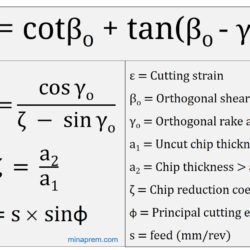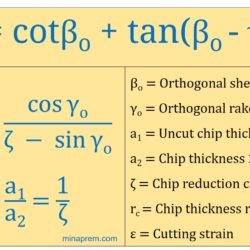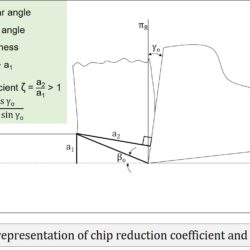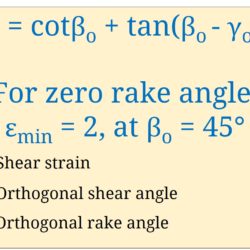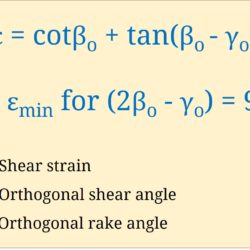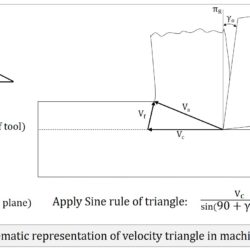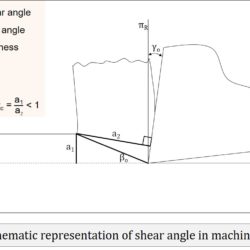Calculate shear strain from feed, chip thickness and rake angle
Question: During orthogonal turning operation of a hollow cylindrical pipe, it is found that the thickness of the chip produced is 0.5mm. The feed given to the zero degree rake angle tool is 0.2mm/rev. Calculate the shear strain produced during the operation? [GATE 2014] Solution: Cutting stain indicates the shear strain developed during any conventional machining operation due to the shearing of one thin layer of workpiece material over another
